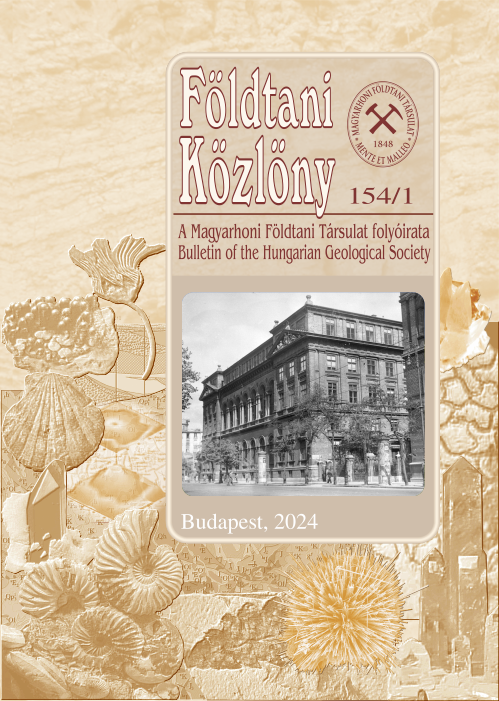isotope geochemistry and characterization of hydrocarbon potential of black shale from Obánya Siltstone Formation
Abstract
In the black shale samples collected from the lower part of the Réka Valley section (Mecsek Mts) of the
Toarcian Óbánya Siltstone Formation, total organic carbon (TOC) contents vary between 3.89% and
8.12% for the laminated lithotype and between 2.14% and 3.29% for the thin-bedded one. Rock Eval data
indicate a type II, immature kerogen throughout the section. Detailed optical analysis reflects that the
organic matter is composed almost exclusively of material linked to an algal origin (liptinite). The
terrestrial plant debris constituents occur as a backround input signal, which accounts for a maximum of
less than 3.2% of the total organic matter. According to the SP (source potential) values these rocks have
an excellent petroleum potential; however, our data may be affected by outcrop weathering.
The kerogen carbon isotopic composition ranges from a S"C value of -30.9%o to -28.6%<J (relative to
V-PDB). Relative to the laminated black shale samples, lower TOC and higher bitumen contents in the
liptinite fraction, together with the lower hydrogen index and higher S1 3Co r g values in the thin-bedded
black shale samples reflect an early diagenetic oxidation of labile marine organic matter. Measured 5 I 3Ccar b
and 6 I 8 0 b values show that the carbonate composition of the black shale samples is strongly affected
by the homogenizing effect of diagenesis. Therefore, these data cannot be used to infer palaeoenvironmental conditions.











